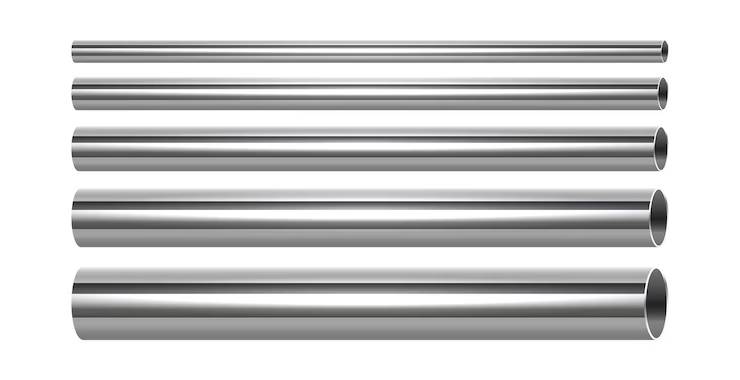
When industrial engineers and procurement specialists need to buy 309 stainless steel pipes, several critical factors must be considered before finalizing any purchase decision. The selection process requires careful evaluation of material properties, specifications, and intended application environments to ensure operational longevity and safety of these pipes.
Those looking to buy 309 grade stainless steel pipes should first understand the unique characteristics that make this alloy suitable for high-temperature applications. This technical guide outlines essential considerations to help industrial buyers make informed decisions when sourcing this specialized material.
Chemical Composition and Material Properties
Grade 309 stainless steel contains higher chromium (22-24%) and nickel (12-15%) content than standard austenitic grades. This enhanced composition provides superior oxidation resistance at temperatures up to 1900°F (1038°C), making it ideal for heat-treating equipment and other high-temperature applications.
The material’s carbon content typically ranges from 0.08% to 0.20%, affecting both weldability and strength properties. Buyers should note that the higher carbon variants offer improved strength at elevated temperatures but may have reduced weldability compared to lower carbon alternatives.
Temperature Resistance Specifications
When evaluating whether to purchase this grade for high-heat environments, understanding temperature thresholds becomes critical. Grade 309 maintains structural integrity and corrosion resistance at temperatures that would compromise lesser grades like 304 or 316.
For cyclic temperature applications, this grade demonstrates excellent thermal fatigue resistance, maintaining dimensional stability through repeated heating and cooling cycles. This characteristic makes it particularly valuable in heat exchangers, furnace components, and thermal processing equipment.
Corrosion Resistance Factors
While primarily selected for heat resistance, 309 stainless steel also offers moderate to good corrosion resistance in various chemical environments. The high chromium content creates a passive oxide layer that protects against oxidizing acids and many industrial chemicals.
It should be noted that this grade shows vulnerability to certain chloride environments, particularly at crevices or under tensile stress. Engineers should carefully evaluate potential exposure to chloride-containing environments before specifying this material for such applications.
Manufacturing Standards and Certifications
ASTM A312 represents the primary specification governing the manufacturing of 309 stainless steel pipe for high-temperature service. This standard outlines requirements for chemical composition, mechanical properties, and testing procedures to ensure material integrity.
Additional certifications may include ASME SA-312 for pressure vessel applications, NACE MR0175/ISO 15156 for sour service environments, or PED 2014/68/EU for pressure equipment in European markets. Procurement teams should specify required certifications based on end-use requirements.
Dimensional Tolerances and Schedule Options
Standard pipe schedules ranging from Schedule 5S to Schedule 80S are typically available for 309 stainless steel pipe. Each schedule designates wall thickness relative to nominal pipe size, with higher numbers indicating thicker walls for more demanding pressure or temperature requirements.
Outside diameter and wall thickness tolerances follow ASTM A999/A999M guidelines, generally allowing ±1% tolerance on OD and ±12.5% tolerance on wall thickness. Tighter tolerances may be available upon request but typically incur additional manufacturing costs.
Weldability and Fabrication Considerations
Despite its excellent high-temperature properties, 309 stainless steel presents moderate challenges during fabrication. The material’s higher chromium content increases susceptibility to sigma phase formation during prolonged exposure to temperatures between 1000-1500°F (538-816°C).
Proper welding procedures, including appropriate filler metals (typically ER309L or E309L), controlled heat input, and post-weld heat treatment may be necessary to maintain material integrity. Fabricators should follow established welding procedures to avoid sensitization or embrittlement.
Cost Factors and Material Availability
Due to its higher nickel and chromium content, 309 stainless steel pipe typically commands a price premium over standard grades like 304/304L. Material costs fluctuate with nickel market prices, potentially affecting lead times and availability.
Standard size ranges and schedules generally maintain reasonable availability, while specialty dimensions may require longer lead times or minimum order quantities. Procurement specialists should factor these considerations into project timelines and budgeting.
Conclusion
Selecting the appropriate 309 stainless steel pipe requires balancing multiple technical considerations against application requirements and budget constraints. By thoroughly evaluating chemical composition, temperature resistance, applicable standards, and fabrication requirements, engineers and procurement specialists can make informed decisions that optimize both performance and cost-effectiveness. This methodical approach ensures that high-temperature applications receive the appropriate material specification for long-term operational success.
Featured Image Source: https://img.freepik.com/free-vector/industrial-silver-steel-pipeline-background-with-3d-effect_1017-58557.jpg
